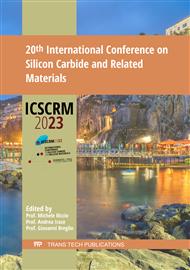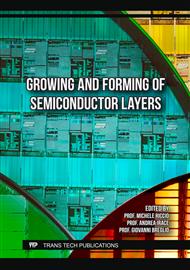p.47
p.53
p.59
p.65
p.71
p.77
p.83
p.89
p.97
Doping Efficiency and Long-Term Stability of Various SiC Epitaxial Reactors and Process Chemistries
Abstract:
Recent advances in SiC MOSFET technology allow significant reduction of on-state resistance of the active transistor cell, increasing thus relative contribution of the drift region comprised typically from epitaxial layer or stack thereof. Tight process control of thickness and doping of epitaxial layers is therefore gaining increasing importance. This paper summarizes some key factors and features of four state-of-the-art SiC epitaxial platforms and their impact on achievable epi parameters and wafer throughput.
Info:
Periodical:
Pages:
97-103
Citation:
Online since:
August 2024
Authors:
Keywords:
Permissions:
Share:
Citation:



